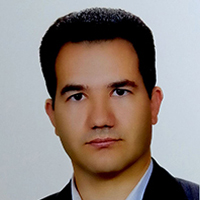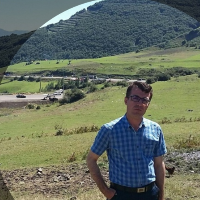The Changeability of Runoff and Sediment Components from Different Compositions and Percentages of Vegetation
Today, the increasing population and, consequently, the demand for agricultural products have caused the natural cover of land, especially forests and pastures to be destroyed by humans at an alarming rate to become agricultural land; even in many areas due to lack of water and nutrients, vegetation growth is limited. Declining vegetation worldwide due to human activities such as overgrazing and deforestation reduces permeability and consequently increases runoff and can reduce soil particle adhesion and predisposes fertile soil particles to erosion. Soil erosion in managed ecosystems such as crops, pastures, or forests, as well as in natural ecosystems leads to extensive damage. It also reduces the infiltration capacity due to runoff and reduces soil organic matter and thus valuable soil nutrients. At the same time, it significantly reduces the diversity of plant and animal species. To this end, controlling soil erosion is one of the most important goals in water conservation and management programs. Vegetation can be a very important tool to control water erosion and regenerate the ecosystem. Vegetation reduces the shear stress by increasing the roughness and decreasing the water flow velocity, and the hydraulic resistance created by the vegetation causes the absorption and deposition of suspended sediments. Vegetation and its associated factors on a long-term scale also play an important role in modifying the hydrological properties and soil erodibility and sediment load. The role of vegetation in reducing runoff and soil erosion in different studies has been proven. However, the effects of different vegetation compositions have not been studied extensively in runoff and soil erosion control. Accordingly, the present study was planned to investigate the effect of different compositions of graminea and bushes with different coverage percentages on runoff and sediment components.
The study area is part of the natural rangelands located in the surroundings of the University of Mohaghegh Ardabili, Ardabil, NW of Iran. A total of nine treatments from different vegetation compositions including low-height graminea predominance (T1), the composition of dense bushes with graminea (T2), bushes with low-height and medium-distribution (T3), sparse bushes mostly with low and medium height (T4), the composition of sparse bushes with graminea (T5), dense bushes in upper parts (T6), low-height bushes with very low distribution (T7), dense bushes with almost uniform distribution (T8), and no vegetation cover (control) (T9) were selected. In addition, the effect of different percentages (zero, <40, and 40-60) of vegetation on changes in runoff and sediment components was investigated. It should be noted that the vegetation in the control plots was removed at the soil surface in the desired plots as much as possible. Considering that, 27 field plots surrounded by galvanized sheets with an area of 2 m2 with a slope of 12-15% were installed. Study treatments with three replications were designed in a completely randomized block with help of field plots with dimensions of 2*1 m and an approximate slope of 12-15%. This study was performed using a rainfall simulator with an intensity of 32 mm h-1 and a duration of 18 min. The plots were placed in a rectangular in the direction of the slope, using 15 cm high metal sheets, five cm of which were sunk into the soil so that the generated runoff did not seep out of the plots. Totally, five components including time to runoff, runoff volume, runoff coefficient, soil loss, and sediment concentration were measured for each plot.
The results showed that the effect of different vegetation compositions on runoff and sediment components was significant (p-value <0.0001). The maximum time to runoff (1388.33 seconds) in treatment T4 and the minimum runoff (0.41 L) and runoff coefficient (2.14%) in treatment T2, respectively with +98, -82, and -82 % change compared to the control treatment has been obtained. In addition, the minimum soil loss was equal to 1.30 g in treatment T2 and the minimum sediment concentration was equal to 6 g l-1 in treatment T8 with -86 and -69% change compared to the control treatment, respectively. Statistical analysis of the effect of different vegetation percent also showed that there was a significant difference between the mean time to runoff and sediment concentration (p-value<0.001) and a non-significant difference between the mean runoff amount and coefficient (p- value<0.73), and soil loss (p-value<0.15). In general, treatments with less than 40% vegetation were more effective in controlling runoff components and treatments with vegetation between 40 to 60% were more effective in controlling sediment components.
The runoff threshold in different compositions and percentages of vegetation has a significant difference compared to the control treatment. Vegetation in both groups of <40 and 40-60% by delaying the formation of runoff has increased water permeability in the soil. Low-height graminea predominance (T1) treatment, the composition of dense bushes with graminea (T2), bushes with low-height and medium-distribution (T3), and sparse bushes mostly with low and medium height (T4) had the maximum effects (more than 80%) in increasing time to runoff. Although the treatment of the composition of sparse bushes with graminea (T5) was not effective in increasing the runoff threshold and reducing the amount and coefficient of runoff, it reduced the soil loss and sediment concentration by 21 and 57%, respectively, compared to the control treatment. Therefore, it can be concluded that if this type of erosion management strategy is adopted, this type of composition can also be considered. While it is not a suitable management option for runoff and flood control, treatments T4, T3, T2, and T1 should be used effectively. In addition, treatments with <40% vegetation cover had better performance compared to treatments with 40-60% vegetation in improving runoff components; nevertheless, 40-60% of vegetation with a slight difference has played a better role in improving erosion and sediment components. Previous research has confirmed that soil loss processes due to water erosion are closely related to the runoff process. Compared to runoff reduction, vegetation treatments have provided better benefits in reducing erosion and sedimentation. For future studies, the morphological effects of vegetation types on the hydrological and hydraulic properties of degraded soils could be investigated.
-
Estimation of river bank erosion and effective factors in Polealmas-Gilande reach, Balkhlochai River in Ardabil
*, Arezoo Eshaghzadeh, Shokrollah Asghari,
Hydrogeomorphology, Autumn 2024 -
Spatial assessment and zoning of landslide risk in Zamkan watershed using support vector machine and logistic regression
Fariba Esfandyari Darabad, Ghobad Rostami, *, Mousa Abedini
Hydrogeomorphology, Autumn 2024 -
Spatial Pattern of the Multifunctional Disturbance Indicators in the Samian Watershed, Ardabil Province
Vahideh Moradzadeh, Zeinab Hazbavi*, Abazar Esmali-Ouri, , Shirin Zarei
Iranian Journal of Watershed Management Science and Engineering, -
Land degradation intensity mapping using environmental factors and Sentinel-2 derived spectral indices in an arid region in south of Iran
Mohamamd Ebrahim Afifi, *
Anthropogenic Pollution Journal, Winter and Spring 2024 -
Analysis the relationship between the changes of hydrological components and landscape metrics under rainfall simulation and rangeland vegetation of Ardabil Province
Mahin Kalehhouei, , , Rahmani Naneh Karan, Fardin, Fazeli, Alireza, Nazila Alaei, Zeinab Hazbavi *
Journal of Watershed Engineering and Management,





